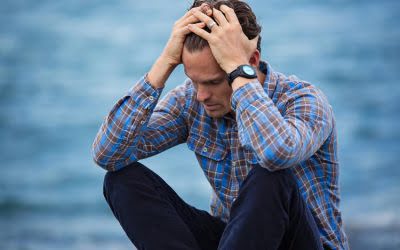By understanding the signs, you can rebuild balance (or support a loved one as they do) and stay focused on what truly supports your well-being. Often the best way to avoid restarting the cycle of addiction is to avoid potential triggers. This can be difficult if the trigger occurs at work or in one’s marriage.

Signs of Dopamine Addiction and How to Break the Cycle
At this stage, the body has adjusted to the presence of the substance or behavior and begins to rely on it to function normally. Individuals may experience withdrawal symptoms when they’re not using the substance or engaging in the behavior. When you’re trying to break the cycle of addiction, you don’t have to define who’s right, but it’s instrumental to tune into what’s right for you. The cycle restarts as emotional distress serves as a trigger for cravings, and the cycle repeats. Breaking this cycle requires understanding each stage and implementing strategies to interrupt the pattern.
Improve Your Life at Laguna Shores Recovery
Contact us today to learn more about our programs and take the first step toward a healthier, more fulfilling future. Breaking the cycle of addiction isn’t just about quitting a substance. It’s about creating a life where how to break the addiction cycle you don’t feel the need to go back. That means finding purpose, reconnecting with loved ones, and setting new goals. A new hobby, a steady job, or even a daily routine can help rebuild confidence.
Spiritual Practices in Addiction Recovery: A Holistic Healing Approach

In short, Lembke says, almost every behavior has become “drugified.” These symptoms can be physical, like nausea or shaking, or emotional, like anxiety or depression. Dependence reflects significant changes in brain chemistry and function, making it extremely challenging to stop using the substance or engaging in the behavior without help. As individuals continue to use the substance or engage in the behavior, they may enter the abuse stage. They might use more than intended or in riskier situations, chasing the high or relief it provides.
You can maintain affordable support through strategic financial planning and community resources. Investigate sliding-scale nonprofit programs, free mutual aid groups like AA/NA, and low-cost online counseling platforms. Many therapists offer reduced fees, while Medicaid may continue covering your care. Treatment centers often provide payment plans, and employer assistance programs can help.
- It means understanding why addiction keeps pulling you back and learning how to break that pattern.
- Making room for these emotions weakens the grip of addiction and opens a path to healing.
- With understanding and the right steps, you can begin to heal and move forward with confidence.
- We think they’re the bad ones, and they are bad, but there are many kinds of addiction.
Ways to Break the Addictive Cycle: Drug Addiction Recovery
When they find success in rehab, they realize it Halfway house wasn’t that rehab didn’t work—it was the initial approach to rehab that hadn’t worked for them. Are you or someone you care about caught in the cycle of addiction? When someone is in the throes of addiction, cravings grow so intense that they become all-consuming. It can get to the point that using drugs or alcohol becomes the most important thing in their life—even more important than life itself. Have you ever heard anyone refer to addiction as a vicious cycle before?
To achieve long–term sobriety the addiction cycle must be broken. Each stage requires different strategies and support, and individuals might cycle through some phases multiple times. Understanding these phases helps frame the recovery process, providing a sense of progression and milestones to work towards. While the journey is challenging, each step forward is a move towards a healthier, more fulfilling life free from the constraints of addiction.

Trust Camelback Recovery to Help You Break the Addiction Cycle
Therapists, rehab programs, and support groups provide real tools to help you move forward. Many people avoid treatment because they worry about cost, but there are options. Blue Cross Blue Shield drug rehab coverage can help cover expenses, making care more accessible. In the next section, we’ll talk about finding the right support for your journey. The people, places, and situations around you play a huge role.
The treatment community does not fully understand dually diagnosed conditions. As a result, these conditions are often treated separately or not treated at all. Our approach integrates scientific findings about the addiction cycle into practical, evidence-based care. We help clients by understanding each stage and its effects.
Practical Strategies to Break the Cycle
She wrote across various topics and found mental health and recovery to be the best fit. Stabilization includes familiarizing clients with what to expect in the treatment environment and their role in treatment and recovery. During this time, practitioners include the client’s family, employers, and other important people.
When sexual behavior becomes an addiction, the person with an addiction loses their connection with friends, family, work, and all his responsibilities. If you’re stuck in the vicious cycle of addiction, you’re not broken. Whether it’s inpatient rehab, partial hospitalization, or intensive outpatient programs, structured treatment is the foundation of lasting recovery. This is why addiction is classified as a chronic brain disease — it physically rewires how someone thinks, feels, and responds to stress.
Your gradual progress timeline depends on factors like program frequency and your baseline mental health. Setting realistic timeframe expectations is pivotal; weekly participation for 4-12 weeks shows measurable benefits. Remember, 85% of studies report positive outcomes, so you’re likely to experience meaningful changes with consistent engagement in structured nature interventions. When you immerse yourself in natural environments, your body responds by producing decreased cortisol levels, directly reducing stress that often triggers relapse. This biological shift creates improved mood stability through augmented serotonin and dopamine regulation.
